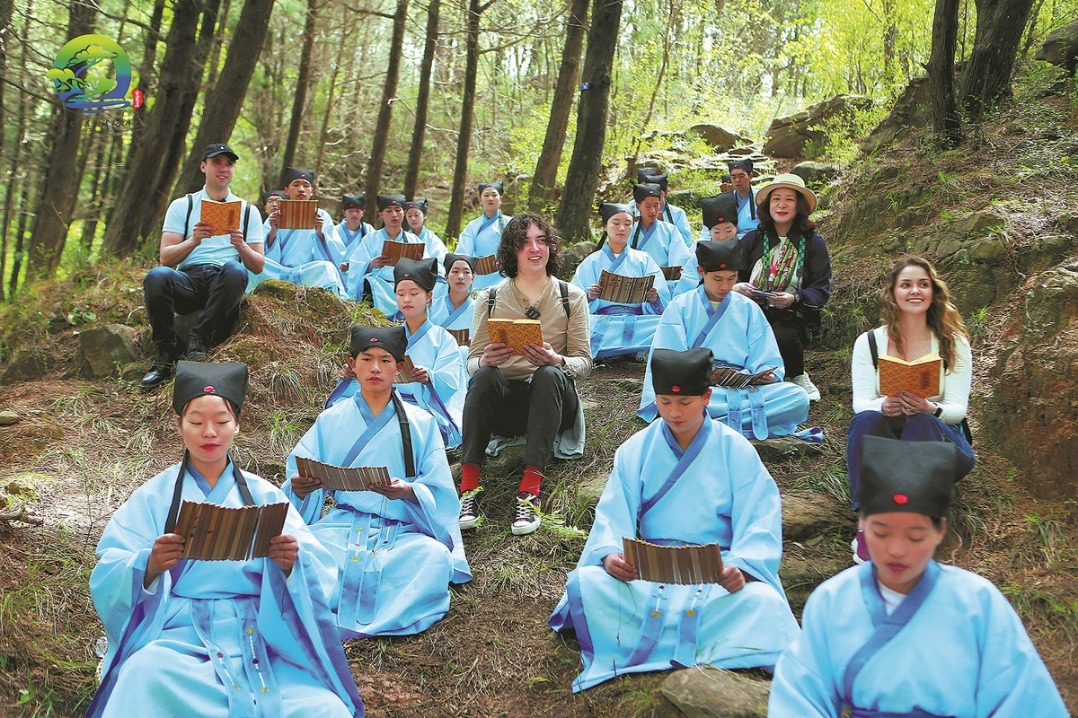Initiative Makes Ancient Paths in China More Accessible to Visitors

The ancient Shudao, a network of roads that once connected present-day Sichuan province with Central China, is set to undergo a significant transformation. These historic pathways, rich with rock carvings and cliff inscriptions whispering tales from China's past, are being developed into immersive cultural heritage themed travel trails, making their treasures more accessible to modern explorers. A key focus is the 160-kilometer-long Jinniu (Golden Ox) Road section, for which a detailed development plan was recently announced, aiming to highlight its profound cultural and historical value.
The ambitious plan outlines the creation of four meticulously designed cultural heritage themed travel trails along the Jinniu Road, spanning Guangyuan and Mianyang in Sichuan province. Recognized among the top 10 outstanding cultural heritage-themed tourism routes in 2024, the construction for these trails is scheduled from 2025 to 2027. Beyond infrastructure, local authorities intend to organize study tours and intangible cultural heritage workshops. These initiatives are designed not only to enrich the visitor experience but also to boost income for local communities through sustainable tourism, as reported by Xinhua News Agency.
Enhancing the journey for travelers is a central theme of the redevelopment. According to Huang Jian, an associate research fellow at the Sichuan Provincial Institute of Cultural Relics and Archaeology involved in designing the Jinniu trails, a mobile app or mini-program is planned. This digital tool will provide tourists with easy access to information about cultural heritage sites, dining options, and accommodation along the trails, and even offer customized itineraries. Furthermore, the plan includes establishing several service centers at carefully chosen locations near historical post houses, which originally offered lodging and sustenance. These new centers will allow tourists to dine, rest, stay, and even rent bicycles. Locals will also be encouraged to convert vacant properties into homestays or eateries, further supporting the local economy and catering to tourist needs.
Protecting the vast heritage of Shudao is paramount. Huang Jian emphasized the need to "strengthen protection for lower level cultural heritage, including stone bridges," in addition to the more prominent national and provincial-level relics. The project aims to transform this ancient network from a series of isolated scenic spots into "living cultural roads by linking its fragmented heritage into a continuous journey." To achieve this, both physical and digital interpretations will be employed, such as digital exhibits showcasing exquisite Buddhist statues and murals, to fully convey the cultural significance of Jinniu Road.
However, the project faces challenges. Shudao extends across Sichuan, Shaanxi, and Gansu provinces, as well as Chongqing municipality, complicating coordinated protection efforts. Huang Jian highlighted the importance of local volunteers in monitoring nearby areas and reporting any issues to the authorities. Despite these hurdles, experts are optimistic. Zheng Wanquan, an associate researcher at the Sichuan Provincial Institute of Cultural Relics and Archaeology, believes Shudao can effectively "blend its historical legacy with ease of access," allowing people to "walk these ancient paths and literally step through history." Authorities will carefully select sections of Shudao to open to visitors, ensuring a balance between accessibility and preservation.
The historical and cultural resonance of Shudao is undeniable. Its marvelous views once inspired masterpieces by iconic Tang Dynasty (618-907) poets. In the early 20th century, overseas explorers and travelers documented their Shudao expeditions, capturing valuable historical photographs that provide a "glimpse into the past," as noted by Cai Dongzhou, a history professor from China West Normal University. The allure of these ancient routes continues, with an increasing number of overseas hikers exploring them in recent years. Zou Yiqing, head of the department of heritage sustainable development at the Beijing Tsinghua Tongheng Urban Planning and Design Institute, pointed out that while Shudao was once a vital artery, modern transportation has shifted its role. She believes that "deeper exploration and more promotion are needed" to unlock its full cultural value and re-establish an emotional connection with this historic network.
The development of the Jinniu Road trails represents a thoughtful effort to preserve and share the rich legacy of Shudao. By integrating modern amenities with ancient wonders, and by involving local communities, the project aims to ensure that these historic roads continue to tell their stories for generations to come, transforming them into vibrant corridors of cultural discovery.











